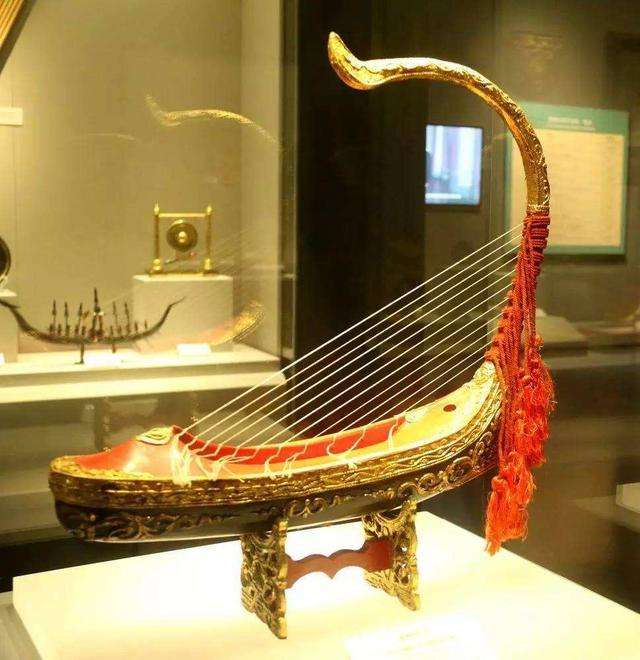The historical origin of Fengshou Konghou
The phoenix head Konghou is a plucked stringed musical instrument of the ancient southwestern ethnic minorities in China.

Entering the Central Plains for the first time
In the 4th century AD, at the beginning of the Eastern Jin Dynasty, the phoenix-headed Konghou was introduced to my country from India along with Tianzhu music. In "Sui Shu·Music Zhi", there is: "Tianzhu" originated from Zhang Chonghua's possession of Liangzhou (346-354), and Chongsi translated it to pay tribute to male performers. "Tianzhu" is its music. … There are nine kinds of Konghou... and so on, and there are 12 workers in one group." Cao Pi of Jin once described in "The Fu of Konghou": "The body of a dragon and the phoenix are in the shape of a phoenix. "
Popular in Chang'an
During the Sui and Tang Dynasties, the phoenix head Konghou was mostly used in court rituals and music. It was used in Tianzhu music, Pyu music, Gaoli music, Xiliang music, Qiuci music and Shule music, especially Pyu music among the ancient nobles in my country. Popular, the phoenix-headed konghou was put on the shelf as the court ceremonies.
In the seventeenth year of Tang Zhenyuan (AD 801), when Emperor Dezong Li Shi was in power (AD 780-804), Shunanda, the prince of the Pyu king, led thirty-five artists to come to Chang'an, the capital of Tang, to present Pyu national music and dance through Nanzhao. Among the 22 musical instruments carried, there are two phoenix-headed Konghou. Bai Juyi, a great poet of the Tang Dynasty, recorded the grand occasion of his performance in Pyu National Music. He wrote in his poem: "Pyu National Music, Pyu National Music, comes from the southwest corner of the sea. Shunanda, the son of Yongqiang, came to present Nanyin and Fengzheng. Shuo. . . . The jade snail blows the vertebra, the bronze drum strikes the tattoo and dances. The pearl ying dazzling turns the stars and shakes, and the flower wand fights the dragon and the snake..." The article "Pyu National Music" in "New Book of Tang" contains: "There are The head of the phoenix is two feet long, and the belly is seven inches wide. The head of the phoenix and the neck are two feet and five inches long. The face is covered with leather, the strings are ten and four, the neck has a crest, and the head of the phoenix is outward; Zhen has the head." Du You's "Tong Dian" says: "The head of the phoenix is a Konghou, and the neck has a Zhen."
A hundred years lost
In the late 14th century, the Fengshou Konghou was completely lost in China.
Song Dynasty Chen Yang's "Book of Music" contains the phoenix-headed Konghou and attached its pictures. Because the sound of the phoenix-headed Konghou is ethereal and soft, it is mostly used in court ceremonies and music. This musical instrument is loved like a treasure and does not want it to be spread to the outside world. Therefore, folk people are forbidden to learn the skill of Konghou, making it extremely rare among the people. Only its drawings were left in the Qing Dynasty, called "general manuscript machine", and it was completely lost after the Ming Dynasty. , but it survived and circulated in Pyu Kingdom (now Myanmar), and was called Saung-Gauk (Sanke) by Southeast Asian ethnic groups, which means curved harp.
re-inherited
In the early 1930s, the Datong Music Society, a well-known ethnic music society in my country, began to try to restore the phoenix head Konghou, but due to war or other reasons, it could not be passed down to the modern age, and only photos of the musical instrument were left. In the 1990s, Burmese musicians who escaped the war brought this instrument back to Southwest China. Before his death, he handed this instrument to Luo Yawen, a young Chinese performer, and joined the Tang Dynasty Ritual and Music Restoration Group. Konghou performer Xu Bilan and others exchanged and studied the restoration of ritual music, reappearing the grand occasion of ritual music in the Sui and Tang Dynasties, and the lost century-old musical instrument was played again in China and continued to be inherited.
 渝公网安备 50010702504639号
渝公网安备 50010702504639号